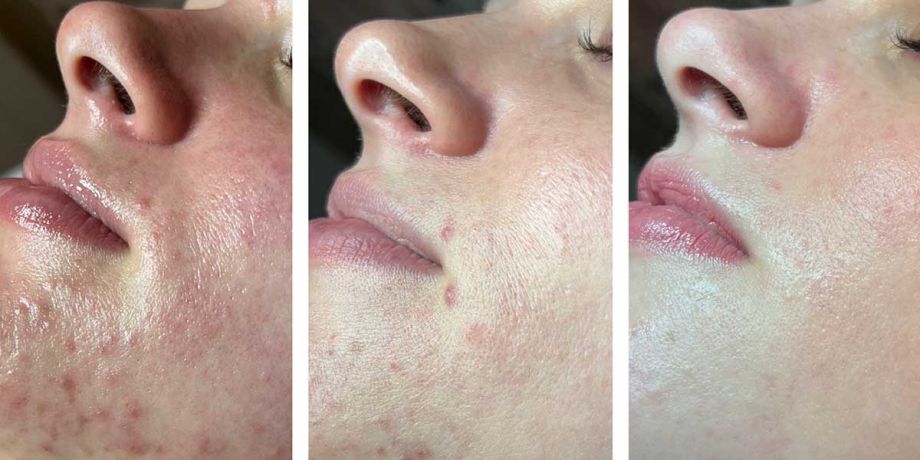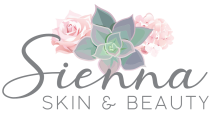
Understanding Acne
The first step is the consultation. During a consultation, there are many questions that a client might be asked so the professional can customize the best treatment plan. Examples of such questions might be “How long have you been experiencing these breakouts?” “Where on your face/body do you break out most frequently?” “Do you experience blackheads, whiteheads, deep/cystic breakouts, etc.?” “What kind of skincare are you currently using? How about makeup and haircare?” “Are you on any medications or supplements?” “Do you have any dietary sensitivities?” “Do you have any allergies?” “How often are you washing pillowcases, makeup brushes, or other items that come in contact with your face?” “Do you have a habit of touching or picking at your face?” “Do your breakouts correspond with your menstrual cycle?” “Are you pregnant or expecting?” “Any hormonal issues or changes recently?” “Have either of your parents or siblings ever had acne?" “How would you rate your current stress level?”
With taking all of these answers into account, the skin therapist will be able to form a more accurate opinion about what could be triggering your breakouts. Sometimes there are external factors causing acne such as comedogenic skincare, makeup or haircare products. Other times, there could be an internal imbalance causing acne, such as hormones or dietary sensitivities. Acne can also be hereditary, so genetics can be at play.
Next, the health and integrity of the skin will be assessed. The skin therapist will look closely at the skin under a dermascope to check for clogged pores, skin lesions, inflammation, signs of dryness/dehydration, post-inflammatory-pigmentation, and scarring.
During this assessment, the skin therapist will identify which condition is the most important to treat before moving onto the next. For example, if a client has acne but their skin is also severely dehydrated, the dehydration must be treated before any progress can be made with clearing the skin. If the skin is severely dehydrated, it will also be exhibiting signs of sensitivity, so most products used to treat acne will be too harsh and will further irritate the skin.
Next, the skin therapist will perform a treatment best suited for the condition of the skin. Sometimes the first facial is about calming and hydrating the skin, other times it might be about balancing oil production and performing gentle extractions to decongest the skin. It truly depends what the skin needs most at that time. Acne is complex and certainly not one size fits all!
Treatment modalities at Sienna Skin & Beauty that may benefit acne-prone skin include LED Light Therapy, High Frequency Electricity, Galvanic Current, Ultrasonic Exfoliation, Dermaplaning, Nano or Micro Needling, and Chemical Peels. Product ingredients which can be helpful for acne might include Niacinamide, Salicylic Acid, Lactic Acid, Glycolic Acid, Hyaluronic Acid, Sulfur and Retinol. There are also many anti inflammatory and antiseptic botanical ingredients added to products which have a balancing effect on acne, such as camphor and certain essential oil extracts. Dermalogica offers many advanced acne products for both consumer and professional use.
If a client is experiencing acne, I usually recommend treatments at least once every 4 weeks to see results. The client pictured in the above photo comes in every 2 weeks and alternates between full Dermaplaning and LED treatments and follow up LED mini treatments. In fall and winter, we also add on the Power Clear Dermalogica Peel.
Home care is just as important as coming in for facials. You wouldn’t go in for a dental cleaning and then never brush or floss your teeth, would you? The client pictured above is consistent with her home care products. She follows a double cleansing routine with regular exfoliation, treatment serums, and lightweight moisturizer. In addition to products, I recommend that clients be mindful of diet, stress management, and habits such as touching the face. Alternatives to picking at the skin include a spot treatment for breakouts such as Dermalogica’s Deep Acne Liquid Patch or even icing breakouts to take down the inflammation.
If you’re struggling with acne, please know that you’re not alone. As complex of an issue as it can be, there are so many treatment options available. With a good Esthetician and some determination, the skin you dream of is waiting for you.
